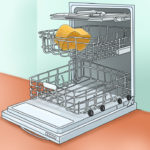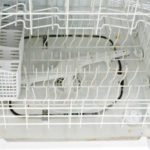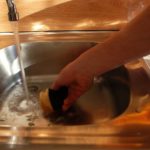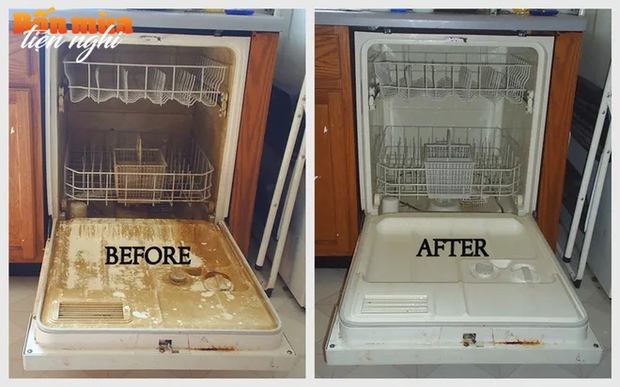
The presence of dishwashers, similar to washing machines, robot vacuums, and other appliances, has made household chores somewhat easier. Dishwashers are primarily used to clean utensils and other suitable objects through an integrated electrical and water system.
Due to this function, many dishwasher users believe that the machine can clean itself while cleaning the utensils, eliminating the need for manual intervention. However, this is a misconception.

Many people think that there is no need to clean the dishwasher. (Illustration)
However, this is a completely incorrect belief.
Some users have pointed out that dishwashers that are not regularly cleaned will experience reduced performance, the accumulation of oxidation deposits, and clogged internal pipes.
Therefore, it is recommended to clean the dishwasher periodically, depending on its frequency of use. You can choose to clean using the machine’s built-in mode or manually disassemble and clean the internal components.
For a household that uses the dishwasher twice a day, it is advisable to clean it every two months.
Ways to Clean the Dishwasher
1. Cleaning using the machine’s built-in mode
Cleaning using the machine’s built-in mode is the simplest method. Dishwashers usually have a mode called “Machine Care.”

The built-in mode “Machine Care” helps clean the dishwasher itself. (Illustration)
You can simply add specialized cleaning agents such as washing liquid or washing tablets and press the corresponding buttons.
However, this method is only suitable for mildly dirty dishwashers.
2. Manual cleaning
If your dishwasher requires a more thorough cleaning, you can opt for the manual method by cleaning each part of the appliance.
When cleaning manually, it is necessary to disassemble the internal parts of the dishwasher for optimal cleaning. The crucial parts that need to be disassembled include the filter and spray arm.
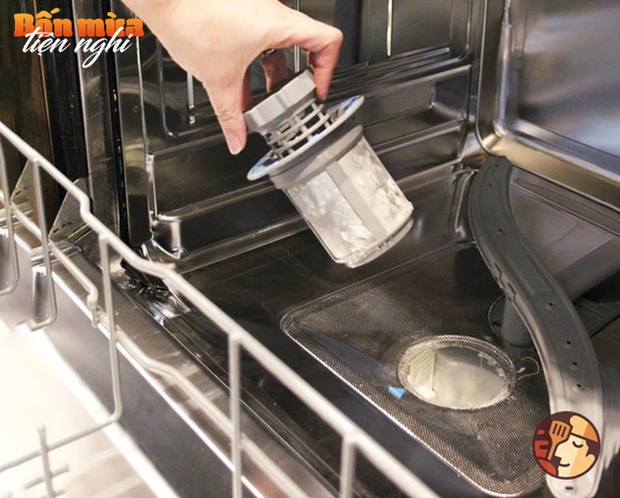
The dishwasher filters need to be disassembled for thorough cleaning. (Illustration)
The first part to disassemble is the filter. The dishwasher filter consists of a main filter, a fine filter basket, and a coarse filter. The main filter captures small food debris to prevent them from clogging the drainpipe. The fine filter basket retains food residue and dirt, while the coarse filter retains large food particles.
To remove the cleaning filter, turn it upside down and slowly lift the entire filter. The order of lifting is as follows: coarse filter, fine filter basket, and then the main filter.
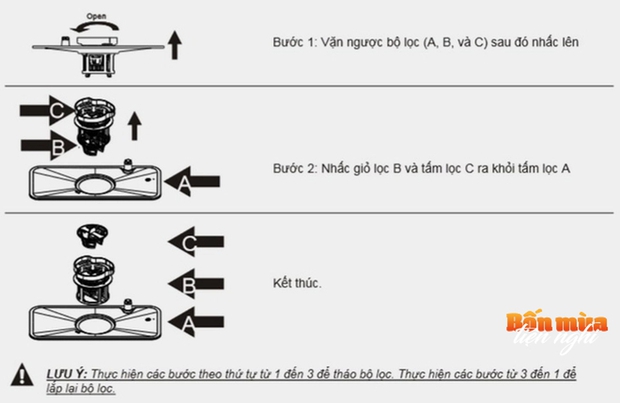
Instructions for removing the dishwasher filter for cleaning. (Illustration)
Take all the disassembled parts to the sink and clean them. You can use soap, regular dishwashing liquid, or baking soda. Before cleaning, it is recommended to turn the parts upside down to ensure all food debris is removed from the filter.
After cleaning the filter, proceed to clean the spray arm (water jet propeller) of the dishwasher. Clean it by mixing warm soapy water or a solution of water and vinegar, and gently scrub the spray holes with a soft brush.
You can also use a toothpick to clean and unclog any clogged spray holes.
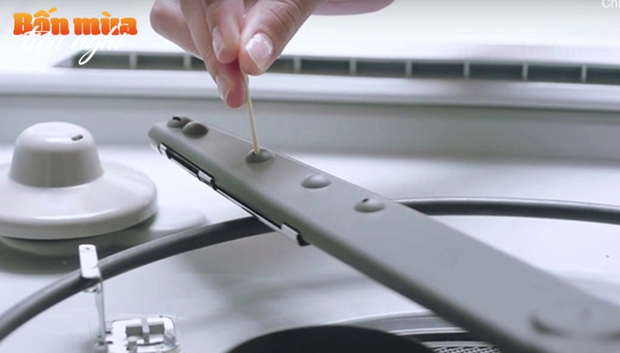
Use a toothpick to clean and clear any clogged nozzles in the dishwasher. (Illustration)
After cleaning, allow the filter and spray arm to dry naturally or wipe them with a soft cloth. Then, reinstall them in their original positions in the dishwasher.
For the exterior of the dishwasher, use a soft cloth and specialized detergent to gently clean it. Pay extra attention to heavily soiled areas and use gentle hand movements to avoid scratching the device.
The final step is to deodorize the machine. Place a cup of white vinegar or a few tablespoons of baking soda in the detergent dispenser and run a wash cycle. For vinegar, choose the program with the highest temperature, and for baking soda, choose the program with the shortest wash cycle.
Vinegar or baking soda will effectively deodorize the dishwasher, ensuring optimal antibacterial benefits.

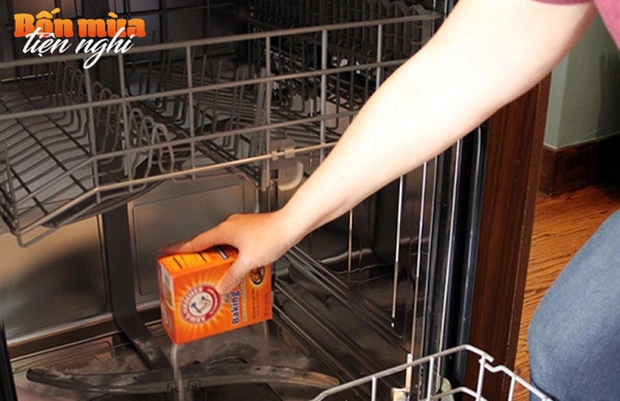
Vinegar and baking soda are effective deodorizers for dishwashers. (Illustration)
Cleaning your dishwasher not only improves its performance but also prolongs its lifespan by preventing long-term damage caused by accumulated dirt.
A clean dishwasher will consume less electricity and water, ensuring that your utensils are clean, fresh, and optimally sanitized for the health of your entire family.



























